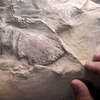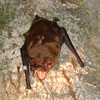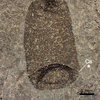5 Tips for Hunting Meteorites

A recent meteor seen as a fireball over the English Channel. (Source: ABC)
2023 has already been a very active year for meteors. In January, a fireball streaked across Europe before exploding over England. More recently, Texas residents were rattled by a loud boom in the Lower Rio Grande Valley before it was determined the explosion was a meteor breaking up. With multiple meteor showers projected for this April, you might be wondering how you can get a piece of the action. Here’s a list of tips to keep in mind if you decide to try some meteorite hunting yourself.
#1 Pick Your Spot
Before venturing out to search for meteorites, you have to know where to look. These rocks fall all over the world, but they’re easiest to identify somewhere with uniform terrain like a desert, making the western United States a hotspot for meteorite hunters. There’s also the question of whose land you’ll be searching on. Rules for taking meteorites from public land differ some based on jurisdiction, so if you want to be sure you’ll be able to keep what you find, making arrangements with the owner of some private land might be a safer bet. Do some research on some old strewn fields or check out somewhere a meteorite has recently been spotted.

The strewn field from the Chelyabinsk meteor. These are hotspots for finding meteorites. (Source: Meteorite Recon)
#2 Come Prepared
When it comes to meteorite hunting, your best tools are going to be your eyes. Look for any rock that seems out of place, especially one that’s darker than its surroundings. Beyond your eyes, you can invest in a metal detector to help you in your searches. Pure iron meteorites are rare, but most have at least some trace of metal. If you’re on a budget, you can simply fashion a magnet to a hiking stick and do your detecting that way. Bringing along a shovel is a good idea too since your meteorite could be embedded in the ground. Be ready to do some digging to get your prize!
#3 Safety First
Remember that working for hours out in the desert comes with its own risks. Treat your meteorite hunting as you would a long day hike. Bring water, sunblock, food, a first aid kit, and anything else you might need while you’re working. Gloves for digging through the dirt and handling rough meteorites is also a good idea, though the rocks themselves are perfectly harmless. Anything you’re going to find will have already cooled and will be safe to handle. Just make sure you have everything you need to be working in the hot sun.

Meteorite hunters at work (Source: Meteorite-hunter.com)
#4 Identifying Your Rock
So you found a rock that looks a little out of place, but is it a meteorite? Here’s some questions to ask. For one thing, is the rock black or a darker color? If so, this may have been produced from the heat of its atmospheric entry. Besides color, what is its texture, smooth to the touch or rough and porous? How does that compare to other rocks in the area? Is it magnetic at all? Ultimately, you won’t be 100% sure unless the rock is examined by a professional, but there’s a lot you can determine on your own in the field.
#5 Now What?
Once you’ve found a meteorite, the question is what are you going to do with it. Do some more research and figure out what exactly you’ve found. Then, you can display the meteorite in your home and start a collection, or see about selling it on the bustling meteorite market. Whatever you do with it, get back out into the field as soon as you can and see what else is out there waiting for you!
If you don't want to wait to get your hands on a meteorite, you can start your collection with something from Mini Museum here.
Featured Product
Joe Frazier Boxing Glove
Cool Things!

Is “Paul is Dead” Dead?: Unpacking One Of Pop Culture’s Most Enduring Conspiracy Theories

Scientists Discover Hooves and Skin in Preserved Dinosaur "Mummies!"
A dinosaur discovery just in time for Halloween! In a new analysis of a group of fossils from Wyoming, Scientists have determined this group of fossils are dinosaur “mummies,” with preserved skin and even hooves.

Scientists Record a Bat Catching Birds Mid-Flight!
Bats, birds, screeches, oh my! In a reverse-Hitchcock twist, a new study reveals that a species of European bat catches and eats birds mid-flight.
Specimen Deep Dives

The House that Ruth Built: The Story of the Old Yankee Stadium

The Queen of the Skies: the Story of the Boeing 747

Old Ironsides: The USS Constitution and the Start of the U.S. Navy
Long Form Articles

The Artist Behind the Macintosh: Susan Kare and Apple Computers
While the two Steves, Jobs and Wozniak, are the most well known faces behind Apple computers, equally important to the products and culture of the company were those who crafted the experience of using their computers through design. The most notable of these visual architects was Susan Kare, a designer responsible for “humanizing” Macintosh computers.

Can I Lick It? Yes You Can!
Have you ever been unable to tell if a fossil was really a fossil, but you were too embarrassed to admit it? Have you ever wanted to lick a fossil just because, but you didn’t want to risk judgment from your peers? Well, good news! You can kill two birds with one stone! Licking a fossil can actually help you determine if it’s the real deal or just another rock.

Is It Legal To Own a Meteorite: How to Start Your Outer Space Collection!
Meteorites are some of the rarest geological specimens to be found on Earth. Of course, since these stones are not of our world, purchasing them can sometimes be a confusing process. Is it legal to own a meteorite? In short, yes! Read on for help starting your cosmic collection!


















